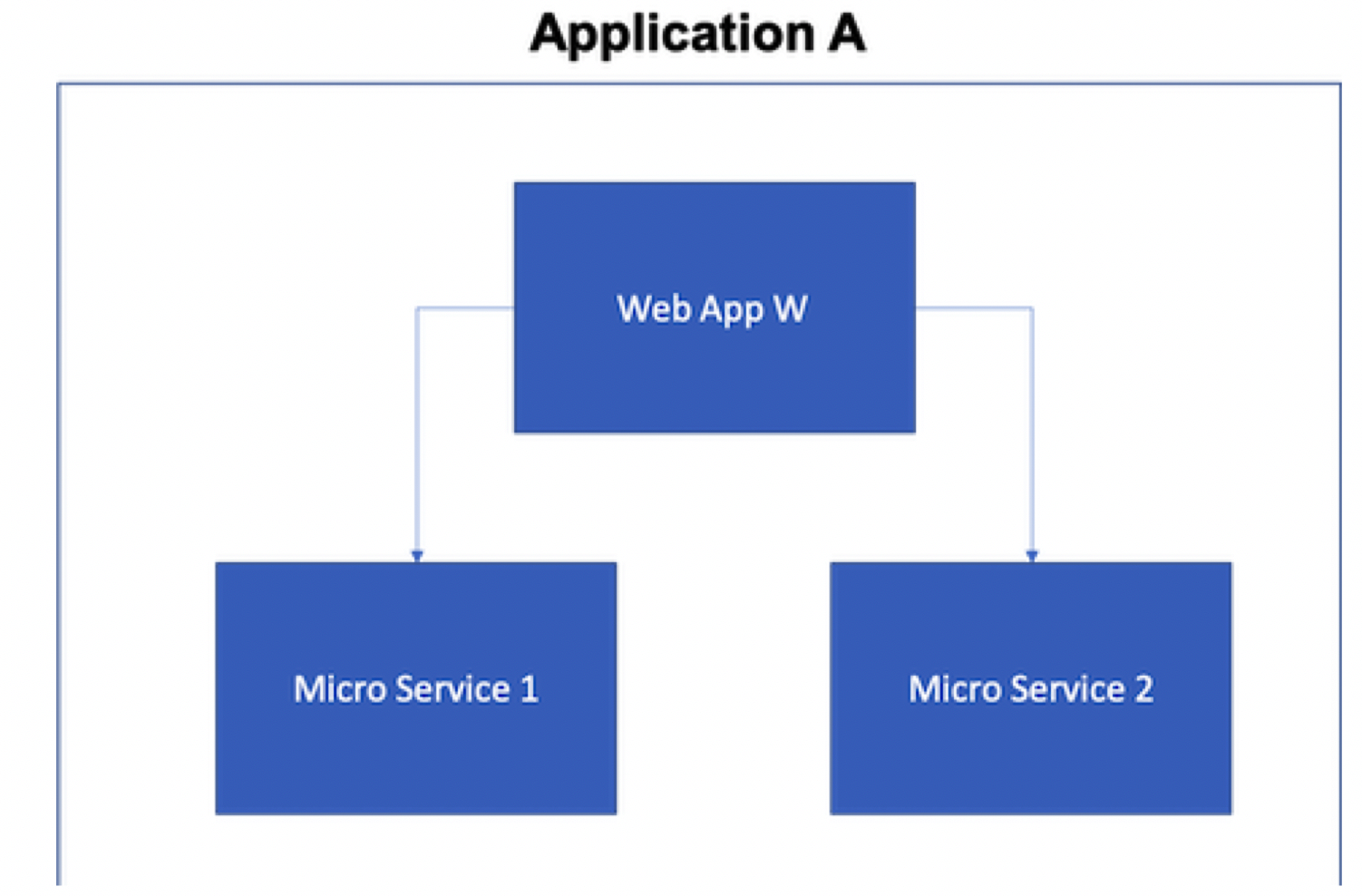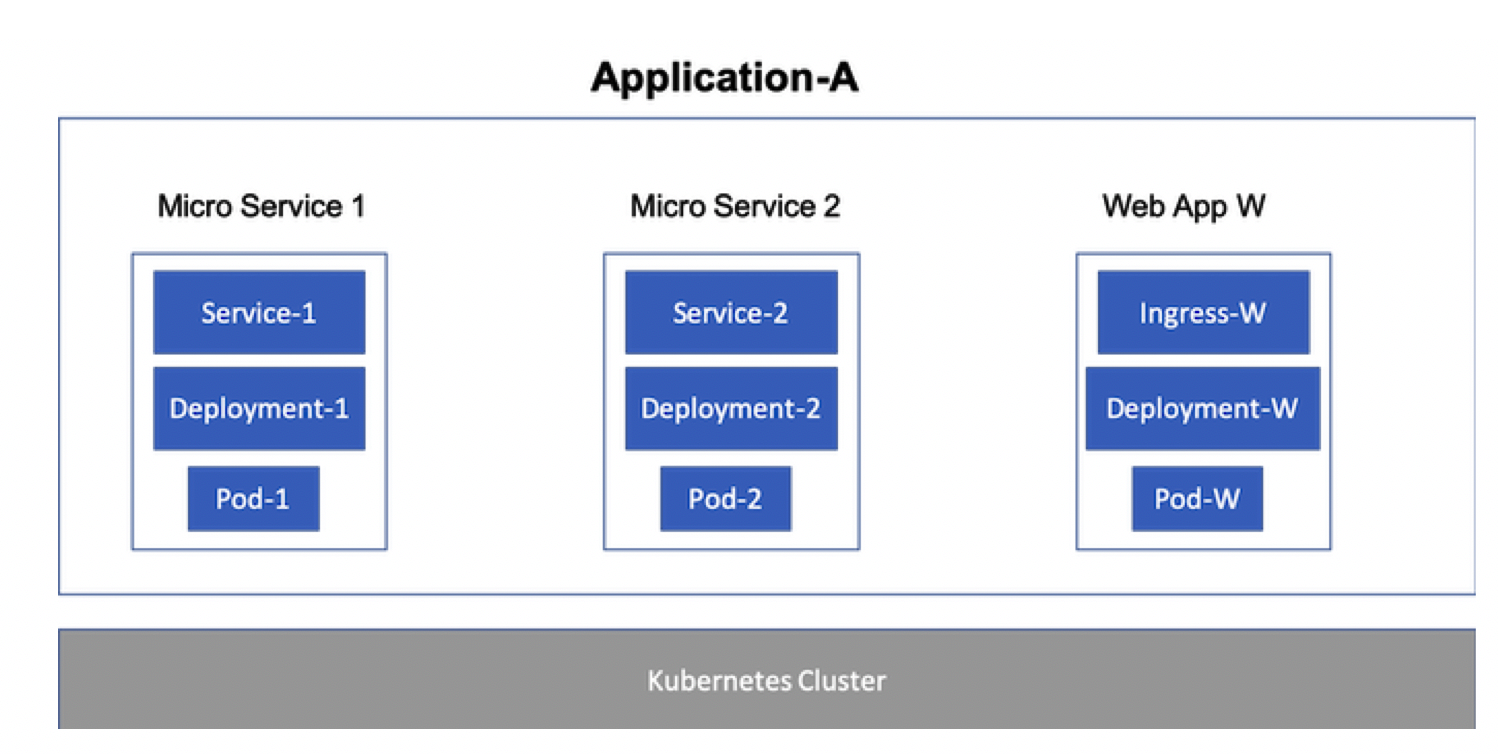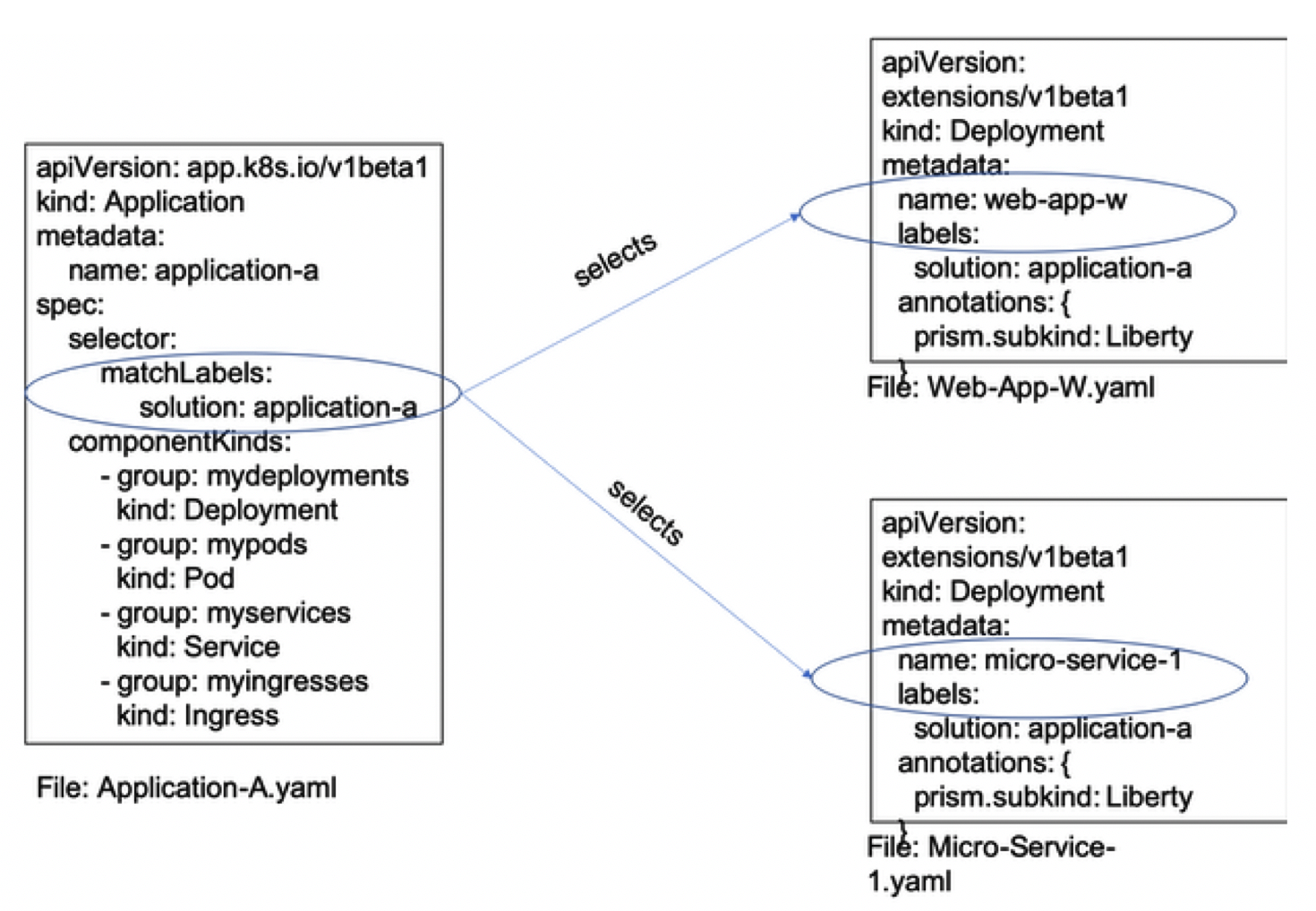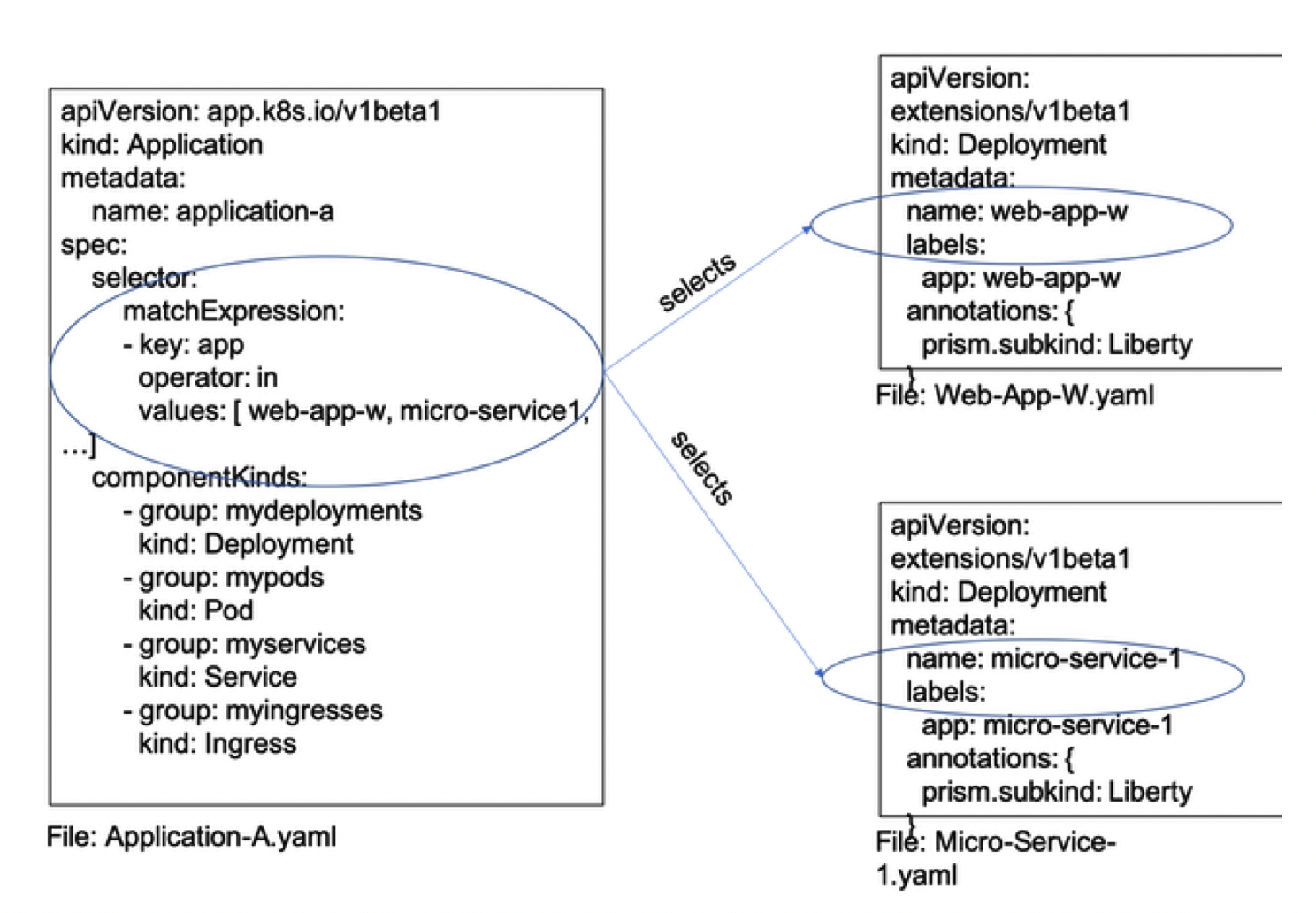Cloud-native applications on Kubernetes
IBM Application Navigator defines applications as a set of Kubernetes resources that work together to satisfy a particular
set of business requirements. Cloud-native applications are composed of distributed components.
In a cloud-native architecture, each component follows the principles that are specified by
12factor.net. These principles specify the logical architecture of a cloud-native application as shown in the following diagram:

In the diagram, you can see the architecture of a simple cloud-native application that is composed of a user-facing component,
Web App W. This component calls the Micro Service 1 and Micro Service 2 components. Each component provides a discrete
function. The following diagram shows the components as Application A. The components work together and satisfy an overall
business need.

Kubernetes applications
The logical architecture of a cloud-native application can be implemented and deployed to various environments. In the following diagram, it is implemented in Java. The architecture uses Open Liberty and deploys to a Kubernetes-based cloud platform, such as Red Hat OpenShift. When the architecture is deployed to Kubernetes, the logical components turn into various Kubernetes resources as the application is installed.

The diagram shows each component that is separately installed to Kubernetes. By following the 12 Factor principles, a component owner can independently install and operate each component. Each component owner can choose a different installation technology, such as Helm charts, Kubernetes operators, or even low-level Kubernetes configuration files. When a component owner deploys components to Kubernetes, each component turns into one or more Kubernetes resources. In the following diagram, you can see a Deployment and Pod resource for each component. These resources provide structure and control over the software containers while the Service or Ingress resources provide network access. This set of components that are composed of resources defines the logical application boundary, for Application A. The logical application boundary uses an Application custom resource with Kubernetes.

Application custom resource
The IBM Application Navigator uses the Kubernetes custom resource extension mechanism to define a custom resource kind, named Application, during its own installation. The Application kind is used to define a set of Kubernetes resources that make up your application. It uses a label selector to select resources that have a label that meets the specified criteria. The selected resources are the components of the application. IBM Application Navigator displays a list of applications, and a list of components for each application.
With the label selector for the Application kind, two principle patterns are commonly used:
- Autonomous membership
- In autonomous membership, individual components choose to be part of a known application.
- Directed membership
- In directed membership, the Application explicitly selects specific components.
Autonomous Membership
In the autonomous membership pattern, the Application kind defines a label selector and any component that is part of that application specifies a matching label. In the following diagram, the Application specifies the label solution with a value of application-a. Any component in the same namespace that specifies that same label or value pair is selected as part of this application. The componentKinds attribute defines an array of kinds and only the specified kinds are selected as components of this application.

Directed membership
In the directed membership pattern, the Application kind defines a label selector that specifies the specific components that are part of that application. In the following diagram, the Application kind specifies a label expression that selects any component that has a label that is named app and a label value that matches any of the values in the specified list. The componentKinds attribute defines an array of kinds and only the specified kinds are selected as components of this application.

Applications as components
Since applications themselves are Kubernetes resources, they can be specified as components of an application. In the following diagram, the application-c, constrains its component membership to be limited to only Application kind. When an application contains a component that is itself an application, the IBM Application Navigator enables multi-level navigation. With this multi-level navigation, you can drill into the top-level application, and then into its component list. For any component that is an application, you can then drill into it to see its component list.
